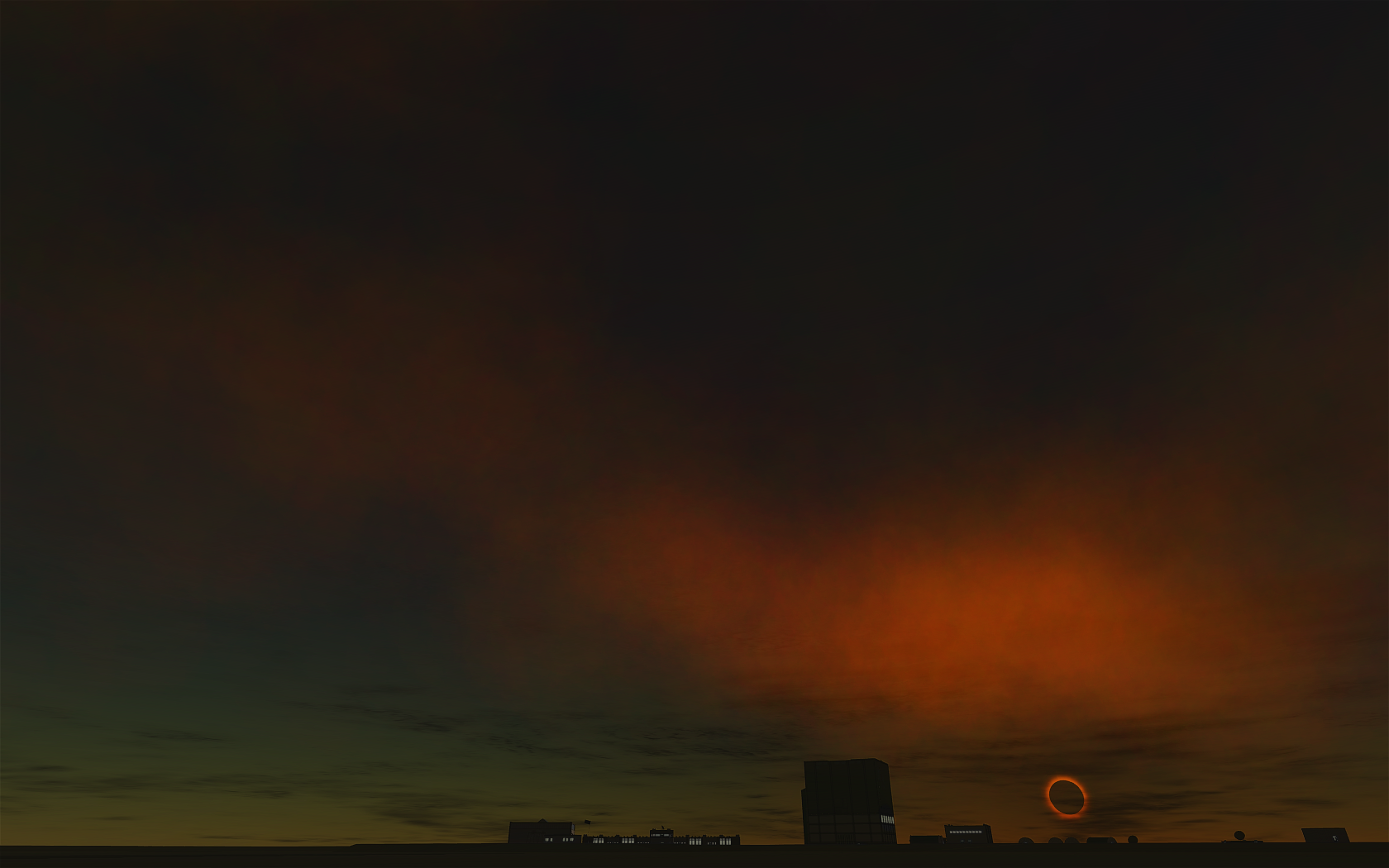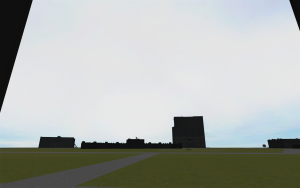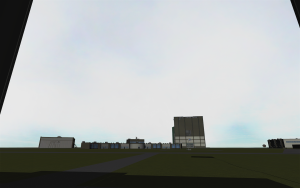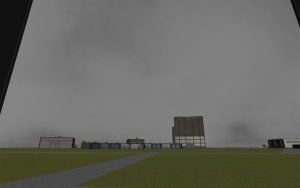|
QEF-511(C) Skims Atmosphere & Remises Plots Departure
Later today the class-C asteroid designated QEF-511 by the Asteroid Tracking Network will pass through Kerbin’s atmosphere to a depth of 52km, taking only about 2 minutes to dip in and back out while traveling at around 3.2km/s. Scientists have already placed instrument stations on the ground that contain seismic sensors and audio recorders as well as infrared detectors hoping to spot the trail as it heats up during its passage. Due to the asteroid’s orbit being over the poles, once through the atmosphere it will be out of sight from all observatories until later this weekend, and it will take almost that long as well for scientists to collect the data from the ground stations and return to Kravass, so we don’t expect to hear any news until Sunday at the earliest.
In other asteroid news, one of our resident captured asteroids Remises was caught making an unscheduled pass through Mun’s SOI this week, which greatly frustrated astronomers who had predicted this would not happen until September of this year. This is the second time their prediction proved false and they once again took a close look at the software being used to plot orbital trajectories, finding that if they searched for the earlier SOI intercept themselves, they could see it happening but the software failed to detect the event. They have since increased the bounds by which SOI events are picked up. The good news is the continued improvement of this software will only further aid us in future orbital missions. The bad news is that after leaving Mun’s SOI and being re-observed for updated orbital data new predictions show that the next SOI pass in late August will fling Remises back out into orbit around Kerbol.
Progenitor Program Pushes Towards July Mk4 Reflight
This week we received all the Mk1-A and Mk3 boosters needed to begin building the core stack that comprises the Mk4. Each of the six boosters have had their thrust decreased in order for us to see how the Mk4 flies with less and less of a TWR at lift off. The two boosters will be joined together with their fins also attached. Fin angle will be increased as the thrust lowers so that a spin rate of 100-200 RPM is maintained during the ascent for stabilization of the rocket. We also already have the fuel tanks needed to complete the 3rd stage minus the engine, so when we get our first new LF/O engine at the end of this month there will only be several days left of integration work to complete the rocket. We remain on track for a launch no earlier than 7/10.
Also announced this week was the final design for the Automated Master Control Unit that will allow us to begin programming rockets to carry out tasks during final countdown, ascent, and most importantly out in space beyond the range of regular communications when the rocket falls below the horizon. In addition to this separate part, our current MCUs will all be upgraded with a much more limited programming capacity due to their size but still will allow for several hundred lines of instructions to be stored locally.
Genesis Program Continues Civvie Science Flights & Deuce Rebuild
Another science mission was carried out this week in the Civvie using the Atmospheric Fluid Spectro-Variometer instrument, coupled with a contract for crew observations that Commander Valentina used to get the altitude needed to safely fly over the water a few kilometers offshore for atmospheric data collection and be able to glide back to land should she suffer an engine failure. The Civvie will continue to be used for science missions while Genesis considers other uses for the aircraft. Speaking of which, the investigation into the failed drop of a KerBalloon last month has turned up inconclusive evidence that the mechanism used to release the balloon failed to activate the timer triggering the release of pressurized gas to inflate the envelope. Engineers are working to redesign the release mechanism to be more robust, hoping that future KerBalloon missions will once again seek support from Genesis.
The Deuce crash investigation remains ongoing. The engines that were recovered from the sea floor show they were in fine working order when the crash occurred, consistent with reports from the telemetry data. They are now looking more closely at the faulty aerodynamics that Captain Jebediah reported in his complaints about large sideslip he was forced to constantly counter. While this is going on, HAB workers have fully inspected the aircraft and determined the main wings, nose cone and the engine pods with all attached parts will need to be replaced while the rest of the aircraft remains structurally sound and operational. Depending on what the crash investigation finds regarding the sideslip issue, work to the tail section may be needed as well.
KerBalloon Program Profit Continues, Contracts Stream In
The continued overall success of the KerBalloon program is leading to another month of profit for KSA despite the numerous setbacks in the Genesis and Progenitor programs. Thanks to weather and logistics this week saw just one mission, which only half succeeded due to a failure of one balloon on launch. They will attempt the launch again with a new balloon next week, while also looking to perform two launches out at sea. More contracts proposals are already waiting to be reviewed once these are completed and you can always see what accepted contracts are still on deck via the program page.
Astronauts Carry Out Badlands Survival Exercise
Returning from space will not be an exact science the first several times we get around to trying it out. No matter where the astronauts end up landing downrange from a sub-orbital flight they will be far away from any sort of support until we can reach them. To prepare for this they have chosen the worst possible landing location, the Badlands, and are spending 3 days seeing how well they can eke out an existence with minimal supplies that would be carried aboard a small space capsule. Today was their final day and so far we have heard no word from them, which is good because if we had it would be from them returning early due to some emergency. We expect to have them back at KSC by Monday.
ATN Database Update
The weekly update for the Asteroid Tracking Network database is available here, and contains 729 asteroids, no new alerts.
Celestial Snapshot of the Week
Eclipses are a regular occurrence thanks to Mun have no inclination to its orbit, but the ones that occur at sunrise and sunset are relatively rare and the sky conditions due to being so near the horizon make them a wonderful sight to behold.
 From the Desk of Drew Kerman
From the Desk of Drew Kerman
Out of Character Behind the Scenes stuffWritten on 6/8/17
Cruising right along. There were times though I felt that getting this week done so fast was being done at the expense of quality, as there were only 9 photos posted this week (although a good deal of supporting imagery was included as well). But a lot of the things going on were either rather routine (Kerballoon mission) or just didn’t warrant including an image. Hopefully things weren’t too boring this week given the fact that everyone just wants me to “get to space already!” 😛 Sometimes the reality of how I’m running things is hard even for me, I will admit, but still looking forward to exciting events coming soon.
Overcast skies
Getting better at whipping up gloomy weather, which at first was really tough to get right without a lot of work. The general procedure I use now is to adjust my Environmental Visual Enhancements properties being used with Stock Visual Enhancements to create low clouds (around 2500 for the altitude setting) and also tweaking the Layer Volume area setting to 5 from 4 to make the coverage denser. Then I take two images to get the lighting I want and merge them together while turning the sky black and white and adjusting the brightness/contrast to bring out detail in the cloud textures. Here are the two actual images combined to make the third final image:
 |
 |
 |
The first photo was taken at midday so there are no shadows on the ground, while the second photo was taken closer to the actual time of day the image was posted for proper lighting on the buildings. So we have the ground from the first photo with the buildings and sky from the second, with the sky turned black & white. I could go a step further sometimes and take different photos of the sky to merge together for a more dynamic cloudscape. I can also render clouds with Paint.Net but I don’t always like how they turn out.
AFBW troubles
Advanced Fly-By-Wire gave me a little bit of trouble when I went to use my X55 and found that it was identifying my stick as the throttle and my throttle as the stick. I thought okay, maybe I just plugged one in before the other in a different order than I usually do, so I unplugged them both and switched the order plugging them back in. That didn’t work, so I just went into the config file and changed the controllerIndex identifier numbers around. I have since made sure to always plug them in in the same order.
Slow flights continue
I forgot to try to revert back to the old Kopernicus when I flew this past week’s Civvie flight so once again I ended up with the game lagging 2-3 real world seconds for every 1 in-game second. It didn’t end up as bad as my previous report and I was still able to land, but it was still annoying as hell. Will definitely need to get to the bottom of this because my recordings of previous flights prove this wasn’t an issue until recently.
VAB occlusion is a real deal
As this image shows, the KerBalloon was indeed rising behind the VAB from the view of the Tracking Station during this past week’s mission, and also during the Civvie mission although in that case I guesstimated when it occurred since it’s harder to move the camera back to the KSC & check while flying. There will be an in-game solution to this problem in the coming weeks.
Remises orbit prediction troubles improve KSPTOT
I wasn’t coming up with the idea for the Remises orbital predictions to be false, there are still plenty of issues with KSP Trajectory Optimization Tool (Mission Architect) that need to be resolved as people continue to apply the program to various tasks. The reason for missing this last SOI hit was accurate, the program was indeed plotting the intercept but failing to recognize it was occurring. It’s great that KSA is helping KSPTOT become a more robust program, and this is only one of many examples in which it’s been doing so.
Online KSPTOT graphs?
Speaking of KSPTOT, although I’ve done searches several times in the past few months for an online viewer for Matlab graphs a search I did this past week finally turned up something hopeful in the form of plot.ly. The initial attempt by the KSPTOT author to get it to work however showed that it’s going to take a bit more effort than simply including the API and calling its conversion function. That’s disappointing but hopefully he can revisit this sometime in the future and you can all finally see graphs like this in an interactive web version that lets you zoom, pan, rotate, etc!







